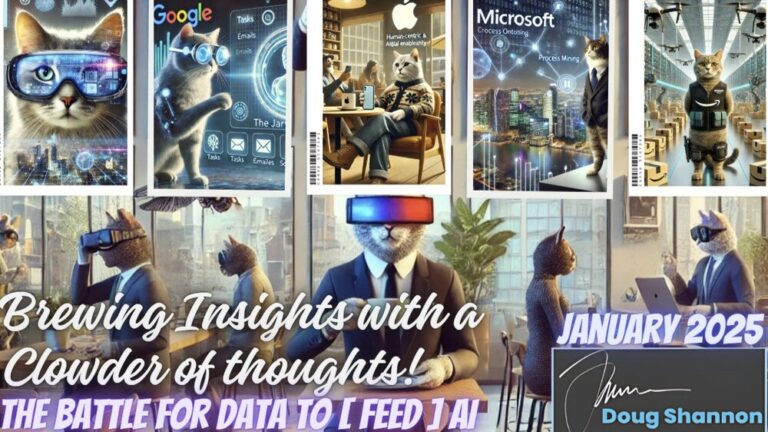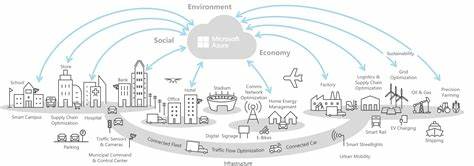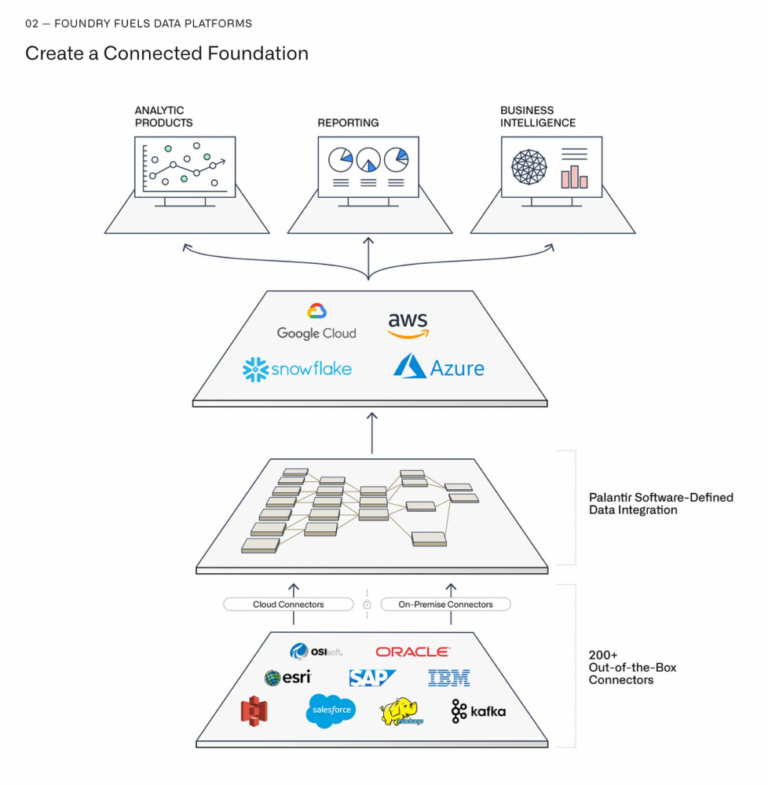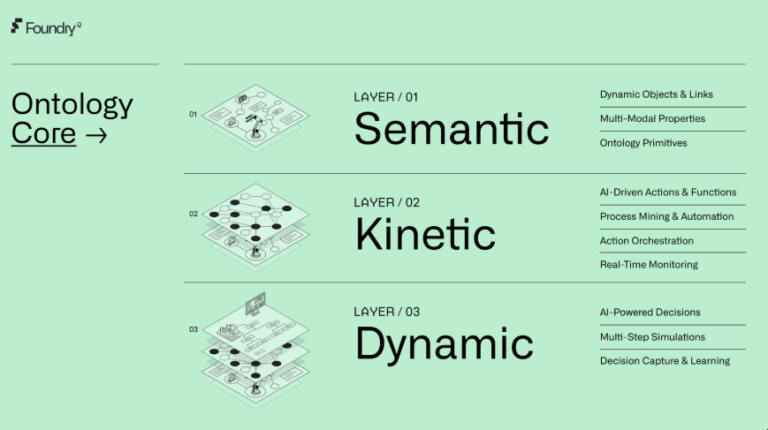
The Battle for Data to (Feed) AI and the Future of Industry Leadership

Across the tech landscape, the largest players, Google, Microsoft, Amazon, Meta, and Apple, are engaged in the battle for data. Where personal, enterprise, or geospatial, data is the lifeblood of their existing or future ecosystems, fueling dominance in their “respective” markets.
𝐓𝐡𝐞 𝐁𝐢𝐠𝐠𝐞𝐫 𝐏𝐢𝐜𝐭𝐮𝐫𝐞 By collecting first-touch data (directly from you), second-touch data (from partners), and third-touch data (purchased externally), companies build comprehensive models of user behavior. Yet, with unclear rules and a lack of transparency, we often don’t realize the full extent of how our data is being used or combined behind the scenes.
Yet… This isn’t just about collecting data.
It’s about transforming it into actionable intelligence through ontologies (mapping relationships) and taxonomies (structuring knowledge).
The question for businesses is simple: Are you taking control of your data to drive your future, or are you leaving it in the hands of others to define your path?
Let’s dig into what I am seeing each of the companies leaning toward and you should be aware of.
Google: The Jarvis Moment and the Drive to Own the Front End

Google is aiming to create what I call the “Jarvis moment”, an AI-powered assistant that seamlessly integrates into personal and professional lives. Through Gmail, Google Chat, and Workspace, Google is embedding generative AI into its tools to redefine productivity.
What Google is Doing:
- AI-Driven Personal Assistants: Google is building tools that proactively anticipate user needs, aiming to create a truly “intelligent assistant” for SMBs, startups, and individuals.
- Search Reinvention: Search remains Google’s cornerstone, tying business discovery, customer interaction, and websites into one ecosystem powered by AI insights.
- Small Business Focus: Google is targeting SMBs with integrated solutions, aiming to be the go-to ecosystem for front-end business operations.
Ontology and Taxonomy in Action:
Google’s ontologies map user behavior, relationships, and preferences, while its taxonomies organize this data to power personalized services and predictive insights.
What This Means for Businesses:
If you use Google’s tools, consider how to reclaim and utilize the data you’re generating. SMBs, in particular, must ask themselves: Are we building systems that serve us, or are we giving Google control over our customer relationships and insights?
Microsoft: Reinventing Enterprise AI with Ontologies
Microsoft’s focus on enterprise AI is reshaping how businesses approach productivity, process discovery, and data structuring. Its tools, including Copilot, are being enhanced to drive deeper insights and automation across industries.
What Microsoft is Doing:

- Copilot for Process Discovery: Microsoft is equipping Copilot with process mining and task automation capabilities, enabling enterprises to identify inefficiencies and optimize workflows.
- Ontology as a Service: Microsoft is leveraging ontologies to help enterprises map industry-specific relationships and structure data for actionable decision-making.
- Back-End Dominance: From Azure to Teams, Microsoft remains the backbone of enterprise infrastructure.
Ontology and Taxonomy in Action:
Microsoft’s ontologies map workflows and business processes, while its taxonomies categorize data into hierarchies for better automation and decision-making.
What This Means for Businesses:
While Microsoft’s tools are transformative, relying too heavily on their ecosystem can shift control of your data and processes. Start building your own ontologies and taxonomies to retain ownership and drive innovation on your terms.
Amazon: Dominating Supply Chains and Logistics

Amazon is focused on owning the supply chain, using its infrastructure to redefine logistics, retail, and even healthcare.
What Amazon is Doing:
- End-to-End Logistics: Amazon is enhancing its delivery systems with drones, warehouses, and same-day logistics, aiming to dominate last-mile delivery.
- Healthcare Logistics: From medicine to organ transport, Amazon is expanding its logistics expertise into critical healthcare applications.
- Industrial Infrastructure: Beyond e-commerce, Amazon is creating an industrial backbone that industries depend on for supply chain efficiency.

AWS has many funding rounds in Palantir.
Ontology and Taxonomy in Action:
Amazon’s ontologies connect inventory, logistics, and customer demand, while its taxonomies structure these insights for real-time optimization and predictive modeling.
What This Means for Businesses:

One Ontology. Three Layers of Capability.
High-fidelity objects. Real-time actions. Multi-step simulations. Foundry Ontology is a groundbreaking new way to interact with your business.
Amazon’s logistics dominance sets a high bar. Businesses must evaluate their supply chain strategies, creating efficiencies that keep them competitive without over-relying on Amazon’s infrastructure.
Meta: Driving Large Geospatial Models (LGMs) / Large Concept Models (LCM)
Meta’s focus on Large Geospatial Models (LGMs) represents a transformative approach to capturing and understanding the physical world. These models are designed to map the planet at scale, enabling hyper-accurate representations that power AR, VR, and other spatial applications.
My last newsletter went in deep to explain the what, where, and how of LGM’s.
Large Concept Models (LCMs): Predicting Ideas, Not Just Words
Imagine a system that predicts the next idea instead of simply guessing the next word. It understands context at a deeper level, thinking in complete thoughts.
Example: You write: “The dog curled up by the fire. The wind howled outside. Without warning…” The model predicts: “The lights flickered and went out.”
Escribes: “El perro se acurrucó junto al fuego. El viento aullaba afuera. De repente…” El modelo predice: “Las luces parpadearon y se apagaron.”
Notice how it doesn’t just toss out random words. It anticipates the entire next scene, like planning a story’s plot in meaningful pieces.
Why This Matters:
- Language-Agnostic Understanding: It doesn’t matter if you input text in English, Spanish, or any other language. The focus is on meaning, not specific words.
Example:
In English: “The dog is hungry.”
En español: “El perro tiene hambre.”
The model treats them the same because both convey the same concept.
- Multimodal Intelligence: LCMs work with text, sound, and even visuals. Show it a photo of an empty food bowl or say, “Time to feed the dog,” and it understands: “The dog needs to eat.”
- Game-Changing for Complex Writing: Whether you’re drafting a report or outlining a novel, the model helps structure your key points and flow rather than getting bogged down by the next word choice. Think of it as a thought partner guiding the direction of your content.
Operationally, the model predicts auto-regressively a sequence of concepts followed by a break concept, which represents a natural topic cadence such as a paragraph break. Once the break concept is predicted, the large planning model (LPM) generates a plan to condition the LCM for the prediction of the subsequent sequence. The model then continues generation as usual, conditioned on both the prior concepts and the proposed plan. An overview of the approach is shown in Figure 17 below.

Figure 17 – LCM conditioned on both the prior context and a high-level plan for the next sequence.
So then… What Meta is doing:
Geospatial Data Collection or Large Concept Models that are Predicting Ideas… Well its (Both)
Meta’s smart glasses, AR/VR headsets, and mobile apps are key tools for capturing geospatial data.
- Building the Digital Twin: LGMs enable Meta to create a real-time digital twin of the world, integrating spatial data with user interactions.
- Augmented and Virtual Reality: These models drive Meta’s efforts to merge physical and digital environments, creating seamless “phygital” experiences.
Ontology and Taxonomy in Action:
Meta’s ontologies map spatial relationships and user interactions, while taxonomies organize this data to create actionable layers for AR/VR applications.
What This Means for Businesses:
Meta’s LGMs will dominate the infrastructure for immersive experiences. Businesses must explore how to leverage geospatial data and AR/VR technologies without ceding full control of their ecosystems to Meta.
Apple: The Phone as the Key to Human-AI Collaboration
Apple has taken a unique approach by staying relatively quiet in the AI race compared to its competitors. From what I’m seeing, Apple is focusing on the iPhone as the central device for human-AI collaboration and daily enablement.
What Apple is Doing:
- The Phone as a Universal Tool: The iPhone is already a core part of people’s daily lives, serving as a payment device (Apple Pay), a transit pass, and an authentication tool. Apple is likely to double down on this, making the phone the “key” to everything in the digital and physical worlds.
- Careful Experimentation with AR/VR: While Apple has dabbled in AR and VR, it has stepped back to reassess its position. Its focus remains on human-centered interactivity and practical enablement.
- Collaboration with Other Apps: Apple’s strategy seems to include working alongside third-party applications while also ensuring they capture and manage their share of data.
Ontology and Taxonomy in Action:
Apple’s ontologies map user behaviors and device interactions, while its taxonomies structure this data to seamlessly connect various apps and services into one cohesive experience.
What This Means for Businesses:
Apple’s approach highlights the importance of making technology intuitive and empowering. As a business, think about how you can integrate with Apple’s ecosystem to enhance customer experiences while ensuring your own systems maintain control over critical data.
A Call to Action: Build Your Own Data Ecosystem
The tech giants are moving fast, but businesses can take control of their future by:
- Mining and Structuring Your Own Data: Develop ontologies and taxonomies to transform raw data into actionable insights.
- Exploring Goal-Oriented AI: Move beyond task automation and adopt AI systems that align with your objectives. Think beyond Agentic and lean into multi-agent systems or frameworks.
- Collaborating Wisely: Partner with companies, vendors, and leaders who empower you, not just sell solutions.
My overall closing thought is this: The future isn’t about letting technology lead; it’s about how we collaborate with it. The giants are building ecosystems to control data, but we must build our own. By taking ownership of our insights, aligning tools with our goals, and prioritizing humanity in innovation, we can ensure that technology serves us, not the other way around.
It’s your responsibility to your own company to build controls around your business processes and your overall intellectual property.

 - by
- by



